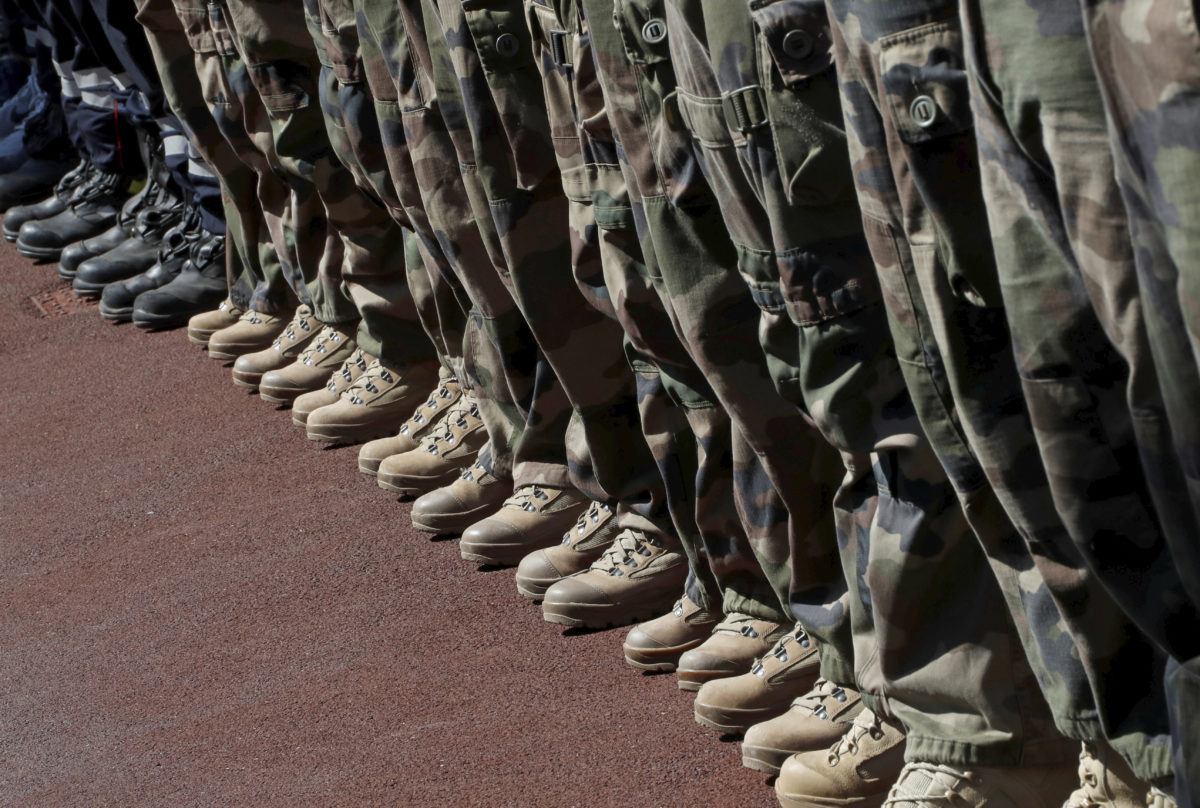City agency helps vulnerable veterans find stable housing
 |
| Eric Gaillard/POOL via AP
As the general veteran population faces a high risk of homelessness, dishonorably discharged veterans struggle even more with finding housing stability.
A new program in New York introduced by the city’s Department of Veterans Services called HUD-VASH Continuum is the first in the country to help disconnected veterans — who are ineligible for benefits and support services like housing due to the amount of time they served in the military or their discharge status — find access to housing services for which they otherwise wouldn’t be eligible.
Nicole Branca, the assistant commissioner and senior advisor for Housing and Support Services at DVS, said that the agency’s goal is to ensure that veterans transition into secure housing and maintain connections to other services available.
“When we were created in 2016, we were the only city in the country with a fully operating veterans municipal agency. And because these veterans are not eligible for the VA, we needed to identify resources in the community to maintain housing stability for our veterans — because it’s not just about giving them a rental subsidy,” said Branca, 44.
Branca said there are three levels to the program: Veteran Peer Coordinators, who work directly with the veterans; the aftercare program to help veterans after they’ve moved into housing; and a housing team coordinating with the landlords to choose apartments. Once the landlords meet with the housing team and agree to work with DVS, they bring the veterans to look at the apartments before they move in.
The traditional HUD-VASH program, which was started in 2008, was a collaboration between two federal agencies, the Department of Housing and Urban Development and the Department of Veterans Affairs. The vouchers are distributed based on a series of factors, including health care eligibility, homelessness status and income.
Coco Culhane, director of the Veteran Advocacy Project, said substance abuse and discharges that were less than honorable play a huge role in veteran homelessness, according to the VA. She said that homelessness rates are much higher among veterans who were discharged as a result of misconduct.
“The Continuum is designed to connect veterans to housing stability, specifically for a housing voucher that would pay rent,” said Jahmila Martin, the program director of Veterans Aftercare Programs at HELP USA. “But because of their discharge status, they were unable to receive those services because of the makeup of veteran homelessness in New York City and we are really seeing a chronic recidivism of shelter return.”
Throughout the first year of the Continuum pilot program, NYC DVS and NYCHA were able to distribute more than 100 vouchers to disconnected veterans.
This is a part of a city-wide effort to get to “Functional Zero,” a designation indicating that all newly homeless veterans are housed within the first 90 days that they enter the homeless system. According to NYC Veterans, an agency established by New York in 2016 to help service members and veterans, the city has seen a 90 percent decline in veteran homelessness since 2011.
The Manual for Courts-Martial has defined a dishonorable discharge as those who have committed a felony or acted in a way that required severe punishment. As a result, there are a variety of VA benefits for which veterans who have been dishonorably discharged are not eligible, including disability compensation, health care and education assistance.
According to the Department of Defense, there are approximately 22,937 veterans in the country who were given a dishonorable discharge in 2014. Recently, in New York, Culhane said she had around 650 veterans at any one time waiting for the Veteran Advocacy Project to investigate their case.
Veteran advocacy group Swords to Plowshares published statistics in 2016 showing that veterans today are twice as likely to be discharged with “bad papers” than they were during the Vietnam War.
“Regardless of their discharge, they’re living on your streets and in some cases, for long periods of time,” said Brian Sullivan, senior public affairs specialist for HUD. “The data tells us and our experience tells us that a person who lives on the street costs the system an unbelievable amount of money — and they’re dying out there.”
There are experts working on the Continuum program who said they were inspired to create it mainly as a result of seeing what homeless services for veterans did not provide.
“The homeless service system is like the ER for the hospital. ER doesn’t care about people’s general check-up and they don’t care about their general health. They care about emergencies,” said Daniel Farrell, senior vice president of Homeless Prevention, Diversion and Research at HELP USA. “The homeless service system is reluctantly constructed that way, and it hasn’t gone beyond.”
“People don’t need to be languishing in shelters and working on their root causes of homelessness from the shelter or the streets,” said Brian Bardell, vice president of programs at Volunteers of America-Greater New York. “For HUD to relax the requirements enough to have access for veterans with different types of discharges really opened the door for those working to end veteran homelessness to get down to a sustainable number.”
This article was originally published in Brooklyn Daily Eagle.
|


Comments